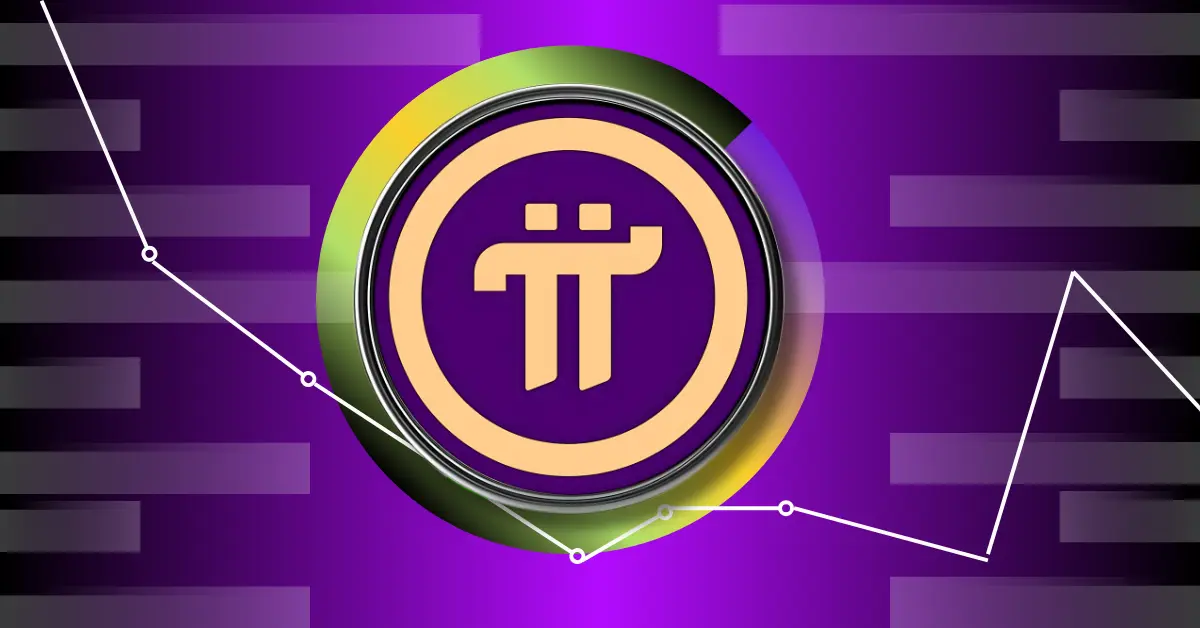The Pi Network, a cryptocurrency project known for its unique approach to user engagement and token distribution, is currently facing a pivotal moment with the imminent unlocking of a massive supply of its native PI tokens. This unlock event, expected to release approximately 337 million PI tokens into circulation within a 30-day window around June and July 2025, has triggered extensive debate and concern within the crypto community regarding its potential impact on the token’s price and market stability.
Understanding the Token Unlock and Its Significance
Unlike traditional cryptocurrencies with immediate full circulation, Pi Network features a gradual unlocking schedule extending up to July 2028, at which point the entire total supply of 100 billion PI tokens is intended to be in circulation. This controlled release aims to stabilize the market by avoiding sudden supply shocks.
The approaching release of 337 million tokens—valued at roughly $185 million according to current market prices hovering near $0.55 per PI—represents one of the largest monthly unlocks to date. This accounts for approximately 4.1% of Pi’s circulating supply, a scale significant enough to substantially affect supply-demand dynamics, especially given that Pi’s trading volume remains relatively modest, around $100 million daily. Such an influx of new tokens risks overwhelming market demand unless counterbalanced by strong buy-side interest.
Market Context: Recent Price Movements and Trading Volumes
Pi Network’s token price has experienced notable volatility, currently trading near $0.54 to $0.56 per PI and remaining close to all-time lows established earlier in 2025. The decline from highs near $3 in early 2025 reflects a contraction from speculative enthusiasm to more cautious price discovery.
The price dip intensifies around unlock events due to anticipated sell-offs by holders looking to liquidate new tokens, a pattern seen repeatedly in previous unlocks such as the 188 million token release in March 2025. Despite these temporary downturns, the project has maintained an active community with a growing number of users and continuing development. Still, the relatively low trading liquidity means that even moderately sized sell pressure can drive sharp price movements.
Selling Pressure vs. Ecosystem Growth
The key question facing Pi investors is whether the unlocking of hundreds of millions of tokens will trigger a sustained price crash or if the ecosystem’s growth and forthcoming developments can absorb the supply increase without systemic damage.
The community sentiment is split. On one hand, bearish signals from technical analysis, including bearish Relative Strength Index (RSI) and Aroon indicators, suggest mounting sell pressure as holders unlock and consider liquidating tokens. Price charts reflect downturns during previous unlocks, emphasizing vulnerability.
On the other hand, developments such as the upcoming flagship Pi2Day event on June 28, 2025, aim to bolster confidence through announcements regarding potential partnerships, integration of generative AI (GenAI) features, and progress toward mainnet decentralization. These factors could attract fresh investment and speculative demand, partially offsetting supply shocks.
Furthermore, a significant portion of tokens remain locked by users committed to long-term holding, which softens immediate selling pressure and provides a base level of price support. The Pi Network’s unique social and community-driven model encourages gradual accumulation and ecosystem participation rather than speculative flipping.
Implications for Short-Term and Long-Term Price Trends
Short-Term Outlook
In the near term, the combination of low trading volumes and the large token unlock event makes heightened volatility almost certain. The market is likely to absorb some selling pressure, pushing the price downward or causing sideways stagnation until buyers can meet the new token supply.
Analysts project that the price could test critical support levels around $0.40 to $0.50 if selling accelerates, reflecting circa 30% potential dips from current levels. Market participants are watching closely for signs of capitulation versus buying interest, with the June 28 event acting as a critical catalyst.
Long-Term Outlook
Looking beyond immediate price shocks, Pi Network’s long-term trajectory depends heavily on:
– Network adoption: Continued user growth and real-world use cases will increase PI demand.
– Ecosystem development: Expansion of DeFi apps, token utility, and partnerships can create sustained value.
– Market conditions: Overall crypto market sentiment and regulatory factors will influence investor appetite.
If these elements come together favorably, the token could recover and appreciate despite periodic unlock-induced volatility. However, consistent token unlocking until 2028 means that the market must steadily absorb large supply increments for years to come, which poses ongoing risks without corresponding demand expansion.
Strategies for Investors and Participants
– Risk Management: Investors should anticipate volatility spikes around scheduled unlocks and avoid overexposure during these periods.
– Monitoring Key Dates: Awareness of monthly unlock schedules, especially large releases like the 337 million token event, is critical for timing trades.
– Engagement with Ecosystem: Active participation in network events (e.g., Pi2Day) and keeping abreast of technical developments can inform better decision-making.
– Long-Term Perspective: Given the Pi Network’s unique social focus, a long-term holding strategy aligned with network growth may mitigate short-term sell pressures.
Conclusion: Navigating the 337 Million PI Token Unlock
The impending release of 337 million PI tokens poses a formidable challenge to the stability and price performance of Pi Network’s native coin. This unlock represents a substantial new supply amidst modest liquidity, inevitably pressuring the market and raising prospects for price declines or prolonged volatility.
Nonetheless, the Pi Network’s innovative community-driven model and forthcoming ecosystem developments offer potential counterweights to these risks. The market will weigh speculative selling against the project’s evolving fundamental value as the token unlock unfolds.
For investors and enthusiasts, understanding the balance between supply shocks and demand growth is key to navigating this crucial phase in Pi Network’s maturation. Whether PI experiences a sharp crash or resiliently weathers the unlock depends on how successfully the project translates its lively user base and technological promises into sustained market value.
This juncture underscores the complex interplay between tokenomics and investor psychology in emerging crypto projects operating under gradual token release frameworks. The weeks surrounding the 337 million token unlock will likely define Pi’s short-term credibility and set the tone for its long-term potential.











